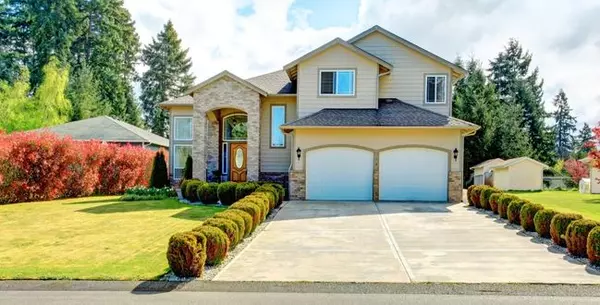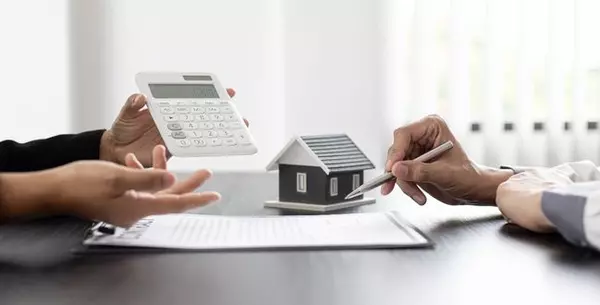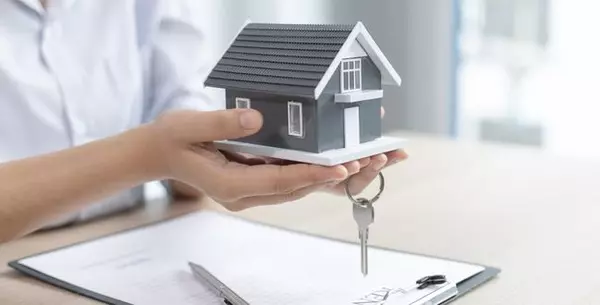Buyers’ Needs and Desires
After you’ve decided to buy a home, what sort of home it will be is your next decision point. It’s a better approach to have a concrete vision in mind of what type, features, and amenities you want in your home, rather than a “shotgun look” at every listing that’s out there in your price range.
Imagine your dream house. It fulfills both your needs and desires. It fits the need for a good roof over your head, a sturdy structure, modern fixtures and appliances, living space (i.e., bedrooms, living room), and functional rooms (i.e., kitchen, bathroom[s]).
Your needs fulfilled, you turn to your desires. Perhaps you envision a home on the beach or in the woods, a gourmet kitchen, a wood-paneled den, a crystal chandelier over a banquet table in the manor-sized dining room or an Olympic-sized swimming pool with a hot tub and sauna. Your priority in any home purchase should be ensuring all of your needs are met. Sometimes, you won’t find everything you desire in a home and if you do, you may not be able to afford it. It’s important to prioritize the things you want in a home by how important they are in your search.
Decide your needs vs. your desires.
-
-
Would you like a swimming pool? Enough that a home without one will not be looked at?
-
In what areas or neighborhoods might the home be located? Where do you want to live? Where might you have to live for work commute or home price reasons?
-
What features would make it special?
-
What can you afford and what is out of your budget?
-
Budget usually constrains us most in selecting a home. While some things are necessary for any home (as mentioned, a good roof and working appliances), others will just stay on the list of desires for now (like the sauna).
MAKE A LIST; CHECK IT TWICE
You may have an impression of what you want in your new home. Putting that to paper and having a complete checklist can prove useful.
Before starting your hunt for a new home, it’s advisable to make a list of all your basic needs and desires, then prioritize the desires, figuring that all needs must be met in any house under consideration. This will make the search easier and help weed out the ones that don’t meet the basics. Realize, however, that it’s nearly impossible to find a home that meets all requirements. Compromises will be necessary.
It’s a good idea to work from outside-the-house factors to inside-the-house. For example, location is perhaps the primary concern and both “needs” factors and “desires” factors might be involved. A “need” would be “must be within 25 miles of work.” A desire might be, “would like Westwood” (a favored neighborhood), while a need might be “on the west side of the city” (because work, family, friends, and recreation activities are all located there).
Location needs may include proximity to schools, frequently used recreation facilities, or mode of transportation (bus or suburban rail access). Whether an item is a need or a desire depends on circumstance.
Closeness to family might be a need for a couple with young children or elderly parents to care for—or a desire if those factors aren’t involved. It’s items like these that make a checklist most helpful.
After location needs and desires are compiled, housing factors can be considered. Needs include having all essential house structures and systems in good working order. Accepting a house with need for a new roof because the owner is willing to knock $7,000 off the listing price—but it will cost $10,000 to replace the roof in two years—is not a sensible deal.
Needs might include a minimum number of bedrooms and bathrooms, no steps, fenced yard, perhaps a first-floor laundry facility, and any feature the prospective buyers have decided they cannot accept a home without. Desires are features that make the home more attractive or enjoyable—an upgraded kitchen, walk-in closets, a master bedroom suite. Of course, one buyer’s need is another buyer’s desire. The point is to know your own needs and desires so you can easily assess potential properties and make the process smoother.
Regardless, buying a house is not a simple process. Much of the planning should be done well before contacting a real estate agent or looking at homes. Work the costs as well as your budget. Choose a general location. Contact lenders well ahead of home shopping, so that your offers aren’t tied up in getting financial approval.
Having the image of your dream home is reality married with imagination. In fact, you may find that some aspects of the house you intend to buy are different. It’s not the same as what your dreams told you. Different people have different requirements. It depends on your thought processes, as well as personality.
We understand important things and potential compromises differently. Needs are basic requirements that just can’t be ignored or compromised. Desires, on the other hand, can be left behind if the situation demands it. You need to make a clear distinction between what your needs are and which items you would classify as desires.
No matter how many desires you have unfulfilled now, they can be worked on later. A pool can be added and paint colors can always be changed.
A NOTE ABOUT PETS
Consider your pets in your home shopping. Home buyers who are pet owners have specific requirements—they must provide for their pets. A third of millennial-aged Americans (born between 1981 and 1996) who purchased their first home (33%) say the desire to have a better space or yard for a dog influenced their decision to purchase the home, according to a survey conducted online by Harris Poll, on behalf of SunTrust Mortgage. Dogs ranked among the top three motivators for first-time home purchasers and were cited by more millennials than marriage/upcoming marriage, 25%, or the birth/expected birth of a child, 19%.
It’s essential that the neighborhood in which you’re going to buy a house has no restrictions on pets—or livestock, if that’s something you desire. Do you raise American Staffordshire Terriers, also known as pit bulls? There are neighborhoods that ban this breed. What about goats? Vietnamese pigs? Have you always wanted fresh eggs from your own chickens? Include your animals in location planning.
Some pet owners choose wood or other hard flooring, not wanting to risk pet damage or odors.
An appropriate-sized fenced backyard is on the “needs” list for many pet-owning house buyers. Consider the arrangement of rooms and the structure of the house to ensure it’s suitable for your pets, too. Traffic in the area could be another checklist item.
Pet services, such as veterinary, grooming, and exercising, should be conveniently nearby.
LOCATION, LOCATION, LOCATION!
You must make sure to limit your search to a neighborhood that offers the closest possible match to the kind of lifestyle that you like and want to live. In addition, based on the 2021 NAR Generational Trends Report, 62% of homebuyers ages 22-95 years old prioritized the quality of the neighborhood as a reason for purchasing a house and primary reason for neighborhood choice.
Location is so important that people are willing to give up “must-have” features to buy into their desired neighborhood—72% would forget about a pool, 55% would lose a finished basement, and 33% would accept less square footage.
What matters is living in a safe place with good schools. According to Trulia, 69% would drive through the neighborhood during different times of day to determine if the neighborhood was the right fit.
You can’t go shopping for a home without choosing a location where you’d like to live. Probably the most significant decision when buying a home is where it is.
Location influences your everyday life. Your property does not exist in a bubble; it’s part of a bigger community. It’s important to find a neighborhood or area that suits your needs. Do you want the peace of a secluded woods, or the energy of a bustling city center?
Do research before starting your search. Drive through the area and see if all the stores, activities, and features you want are there. Eat at local restaurants and walk through a nearby park. As price is mainly based on location and condition of the property, when someone starts looking for their house, it’s important to consider the location and how far it is from schools, shopping areas, and other facilities. Home means comfort, and comfort can’t come if the location isn’t suitable.
Recent Posts











